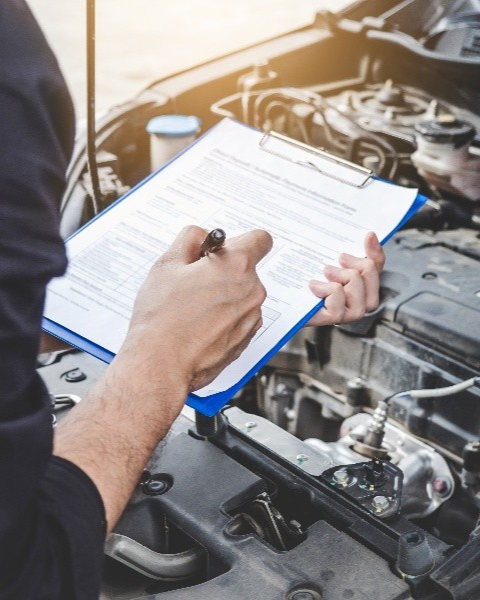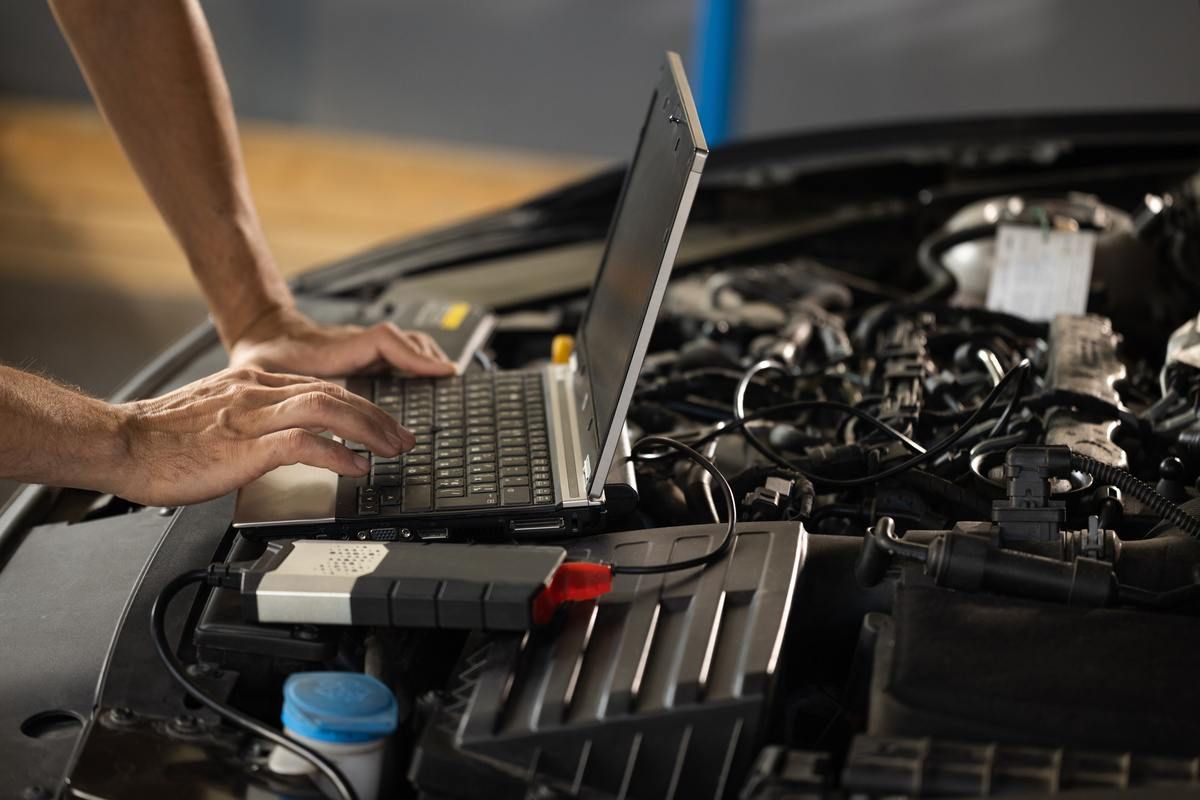By Victor Stewart
•
May 9, 2025
Essential DIY Car Maintenance Tasks You Can Do at Home Taking care of your car doesn't have to be a hassle or cost a fortune. With a few simple DIY car maintenance tasks, you can keep your vehicle running smoothly and save some cash along the way. Whether you're a seasoned mechanic or a total newbie, these tasks are manageable and can be done right at home. Let's dive into some essential maintenance skills that every car owner should know! Your owner's manual is your best friend—use it for maintenance schedules and troubleshooting. Changing your oil and filter regularly is key to keeping your engine healthy. Don't ignore your air filter; a clean one can boost your car's performance. Check your tire pressure monthly to avoid uneven wear and improve fuel efficiency. Regularly inspect and replace wiper blades for better visibility during bad weather. Understanding Your Owner's Manual Your car's owner's manual? Yeah, it's that thick book you probably tossed in the glove compartment and forgot about. But seriously, it's like a cheat sheet for your car. It's got all sorts of useful stuff, and taking a little time to get familiar with it can save you a lot of headaches (and money) down the road. Importance of Preventative Maintenance Think of your owner's manual as your car's personal health guide. It lays out the recommended service intervals for things like oil changes, tire rotations, and fluid checks. Sticking to this schedule is a big deal. It can keep small problems from turning into huge, expensive disasters. Plus, it can seriously extend the life of your car. I mean, who doesn't want their car to last longer? DIY Diagnostics for Common Issues Ever had a weird light pop up on your dashboard and thought, "Oh great, what now?" Well, before you panic and rush to the mechanic, check your owner's manual. It often has a section dedicated to troubleshooting common problems. It might help you figure out what's going on before you even need to call for help. It could save you time and money, and you might even learn something new about your car in the process. Navigating Maintenance Schedules The maintenance schedule in your owner's manual is like a roadmap for keeping your car in top shape. It tells you when to do what, whether it's changing the oil, replacing the air filter, or getting the tires rotated. It's all laid out there, clear as day. Following this schedule is one of the easiest ways to keep your car running smoothly and avoid major repairs. Plus, it can help you keep track of when you last did certain maintenance tasks, so you don't accidentally skip something important. Here's a quick example of what a maintenance schedule might look like (but always check your manual!): Every 5,000 miles: Oil change, tire rotation Every 15,000 miles: Air filter replacement Every 30,000 miles: Fluid flush (coolant, brake fluid) Changing Your Engine Oil and Filter Okay, so changing your oil and filter might seem intimidating, but trust me, it's something you can totally handle at home with a bit of prep. It's way cheaper than going to a shop every time, and you get to know your car a little better. Plus, there's a certain satisfaction in doing it yourself. Let's get into it. Steps for an Effective Oil Change Alright, first things first, gather your supplies. You'll need the right motor oil, a new oil filter, an oil filter wrench, a socket wrench, a drain pan, and some gloves. Safety first, people! Make sure the engine is cool before you start. Then: Locate the oil drain plug underneath your car. Place the drain pan underneath it. Use the socket wrench to loosen and remove the drain plug. Let all the old oil drain out completely. This might take a while, so be patient. While the oil is draining, locate the oil filter. Use the oil filter wrench to loosen and remove the old filter. Make sure to lightly lubricate the rubber gasket on the new filter with fresh oil before installing it. Once the old oil is completely drained, replace the drain plug with a new crush washer. Tighten it to the manufacturer's specified torque. This is important to prevent leaks! Install the new oil filter by hand, tightening it according to the instructions on the filter. Usually, it's about ¾ of a turn after the gasket makes contact. Remove the oil fill cap on top of the engine and add the correct amount of new oil, as specified in your owner's manual. Use a funnel to avoid spills. Replace the oil fill cap. Start the engine and let it run for a few minutes. Check for any leaks around the drain plug and oil filter. Turn off the engine and check the oil level with the dipstick. Add more oil if needed to reach the full mark. Choosing the Right Oil Choosing the right oil is super important. Your owner's manual will tell you the exact type and weight of oil your car needs. Don't just grab any bottle off the shelf! Using the wrong oil can seriously mess with your engine's performance and longevity. There are conventional, synthetic blend, and full synthetic oils. Synthetic oils generally offer better protection and last longer, but they're also more expensive. Consider your driving habits and budget when making your choice. Modern synthetic oils can last longer between changes in some vehicles. If you're unsure, ask an auto parts store employee for help. They can look up the correct oil for your specific vehicle. Disposing of Used Oil Properly Don't just dump that old oil down the drain! That's terrible for the environment. Most auto parts stores and service stations will accept used oil for recycling. Pour the used oil into a sealed container and take it to a designated collection site. Some places might even pay you a small amount for it. It's the responsible thing to do. You can also look into DIY oil change guides for more information. Replacing the Air Filter Okay, so next up is the air filter. Honestly, this is one of the easiest things you can do yourself, and it actually makes a difference. I'm not kidding! It's way simpler than trying to change your own oil, trust me. Plus, a new air filter can help your car breathe better, which means better gas mileage. Who doesn't want that? Identifying the Air Filter Location First things first, you gotta find the air filter. Usually, it's in a black box under the hood. Check your owner's manual – seriously, it's your friend here. It'll show you exactly where it is. It's usually pretty easy to spot, but sometimes it can be tucked away. Once you find it, you'll probably need a screwdriver or maybe just some clips to open the housing. Don't force anything! If it feels stuck, double-check that you've removed all the screws or clips. Signs of a Clogged Filter How do you know if your air filter needs replacing? Well, there are a few signs. If your gas mileage has gone down, that's a big clue. Also, if your engine seems sluggish or doesn't accelerate as well as it used to, that could be the air filter. Sometimes, you can even see that the filter is dirty just by looking at it. If it's covered in dirt, leaves, and bugs, it's time for a change. I usually try to replace mine every year, but if you drive in dusty conditions, you might need to do it more often. Benefits of Regular Replacement Replacing your air filter regularly is a no-brainer. Here's why: Better fuel economy: A clean filter lets your engine breathe easier, which means it doesn't have to work as hard. Improved engine performance: Your car will accelerate better and run smoother. Longer engine life: A clean filter keeps dirt and debris out of your engine, which can prevent wear and tear. Honestly, it's one of the cheapest and easiest ways to keep your car running well. Plus, it's something you can easily do in your driveway with just a few simple tools. So, why not give it a try? You might be surprised at how easy it is! Maintaining Proper Tire Pressure Maintaining the correct tire pressure is super important. It's not just about comfort; it affects your safety, how long your tires last, and even your gas mileage. I try to check mine at least once a month, and before any long trips. It's a simple thing that can make a big difference. How to Check Tire Pressure Checking tire pressure is easy. You'll need a tire pressure gauge – those digital ones are pretty handy, but even a basic stick gauge works. First, find the recommended tire pressure for your car. It's usually on a sticker inside the driver's side doorjamb or in your owner's manual. Don't go by the number on the tire itself; that's the maximum pressure, not the recommended one. Remove the valve cap from the tire, press the gauge firmly onto the valve stem, and get a reading. If the pressure is too high, release some air by pressing the valve stem. If it's too low, add air until you reach the recommended pressure. Always check your tires when they're cold , meaning they haven't been driven on recently, for the most accurate reading. Effects of Underinflation and Overinflation Driving with underinflated or overinflated tires can cause problems. Underinflated tires wear out faster, especially on the edges, and they can also reduce your fuel efficiency. Rolling resistance increases, meaning your engine has to work harder. Overinflated tires, on the other hand, can lead to a rougher ride and reduced traction, because the tire's contact area with the road is smaller. Plus, they're more prone to damage from potholes and other road hazards. Neither situation is ideal, so it's best to keep your tires properly inflated. Using Tire Pressure Monitoring Systems Many newer cars have Tire Pressure Monitoring Systems (TPMS). These systems alert you when your tire pressure is too low. It's a nice feature, but don't rely on it completely. TPMS sensors aren't always accurate, and they might not catch slow leaks. It's still a good idea to manually check your tire pressure regularly, even if you have TPMS. Think of it as a backup, not a replacement, for good old-fashioned tire maintenance. Keeping your tires properly inflated is one of the easiest things you can do to improve your car's performance and safety. It only takes a few minutes, and it can save you money and headaches in the long run. So, make it a habit to check those tires regularly! Checking and Topping Up Fluid Levels Regularly checking and topping up your car's fluids is super important. It can really affect how well your car runs and how long it lasts. I know it sounds like a pain, but trust me, it's way easier than dealing with a breakdown on the side of the road. Key Fluids to Monitor Okay, so what fluids are we talking about? There are a bunch, but here are the main ones you should keep an eye on: Engine Oil: This is like the lifeblood of your engine. It keeps everything moving smoothly and prevents wear and tear. Make sure you check engine oil levels regularly. Coolant: Coolant keeps your engine from overheating. Low coolant can lead to some serious problems, so don't ignore it. Brake Fluid: This is what makes your brakes work. If it's low, your braking performance will suffer. And that's not good. Power Steering Fluid: Makes it easier to turn the wheel. If it's low, steering can become difficult, and you might damage the power steering pump. Windshield Washer Fluid: You need this to keep your windshield clean, especially when it's raining or snowing. Can't see? Can't drive safely. How to Check Fluid Levels Checking fluid levels isn't rocket science. Here's the basic rundown: Consult Your Owner's Manual: This is your best friend. It will tell you exactly where each reservoir is located and how to check the level. Use the Dipstick (for Oil): Most cars have a dipstick for checking the oil. Pull it out, wipe it clean, stick it back in, and then pull it out again to see where the oil level is. There are usually markings that show the minimum and maximum levels. Check the Reservoirs: Coolant, brake fluid, and windshield washer fluid usually have translucent reservoirs with markings that show the recommended fill levels. Just look at the side of the reservoir to see where the fluid level is. It's best to check fluid levels when the engine is cold. This gives you a more accurate reading, especially for coolant, which expands when it's hot. Signs of Fluid Leaks Fluid leaks are bad news. They can lead to all sorts of problems. Here are some signs to watch out for: Puddles Under Your Car: This is the most obvious sign. If you see a puddle of fluid under your car, something is leaking. The color of the fluid can give you a clue as to what's leaking (e.g., brown for oil, green for coolant). Low Fluid Levels: If you're constantly having to top up a particular fluid, it could mean you have a leak. Warning Lights: Some cars have warning lights that come on when fluid levels are low. Don't ignore these lights! Unusual Smells: Some fluids have a distinct smell. For example, coolant has a sweet smell. If you smell something unusual, it could be a sign of a leak. If you suspect a fluid leak, get it checked out by a mechanic ASAP. Ignoring it could lead to serious damage and expensive repairs. Inspecting and Replacing Windshield Wipers Okay, so, windshield wipers. We don't think about them much until it's pouring rain and we can't see a thing. Then we're all, "Oh crap, I need new wipers!" Keeping your wipers in good shape is super important for safety. It's one of those things that's easy to put off, but really shouldn't be. When to Replace Wipers How do you know when it's time for new wipers? Well, there are a few telltale signs. If they're leaving streaks on your windshield, that's a big one. Or if they're making a squealing noise, that's another clue. Basically, if they're not clearing the water properly, it's time. Most wipers last about six months to a year, but it really depends on the weather where you live. Hot sun and freezing temperatures can wear them out faster. Here's a quick checklist: Streaking or smearing Skipping or chattering Visible damage to the rubber Reduced visibility during rain Choosing the Right Wiper Blades Not all wiper blades are created equal. You'll need to get the right size for your car, which you can usually find in your owner's manual or at the auto parts store. There are also different types of blades. Some are made of rubber, while others are silicone. Silicone blades tend to last longer and perform better, but they're also more expensive. It really comes down to personal preference and budget. I usually go for something in the middle – not the cheapest, but not the most expensive either. You can find compatible wiper blades at most auto stores. Installation Tips for New Wipers Replacing wiper blades is usually pretty easy. Most of them just snap on and off. But here are a few tips to make the process even smoother: Lift the wiper arm away from the windshield. Detach the old blade by pressing the release tab. Slide the new blade onto the arm until it clicks into place. Gently lower the wiper arm back onto the windshield. Make sure you don't let the wiper arm snap back against the windshield without a blade attached. It can crack the glass. I learned that the hard way once. Now I always put a towel down just in case. Rotating Your Tires Rotating your tires is something I always put off, but it's honestly one of the easiest ways to make your tires last longer. Plus, it can save you money in the long run. I try to do it every other oil change, which works out to about every 6,000-8,000 miles. It's not rocket science, and you don't need a ton of fancy tools. Why Tire Rotation is Important The main reason to rotate your tires is to even out the wear. Front tires tend to wear down faster, especially on front-wheel-drive cars, because they handle most of the steering and braking. Rotating them helps distribute the wear more evenly across all four tires. This not only extends the life of your tires but also helps maintain better traction and handling. Neglecting this can even void some tire warranties , so it's worth keeping up with. How to Rotate Tires at Home Okay, so here's how I usually do it. First off, safety first! Make sure you're working on a level surface, and always use jack stands. Never rely solely on the jack. Here's the basic process: Loosen the lug nuts on all the wheels before lifting the car. Use the jack to lift the car and then place jack stands under the frame. Remove the wheels. Rotate the tires according to the correct pattern for your vehicle (check your owner's manual – it's usually X-pattern for front-wheel drive and a rearward cross for rear-wheel drive). Mount the tires, tighten the lug nuts by hand, lower the car, and then torque the lug nuts to the proper specification with a torque wrench. It's a good idea to check your tire pressure after rotating them and adjust as needed. Also, inspect your tires for any signs of damage or wear while you have them off. Signs You Need New Tires Even with regular rotation, tires eventually wear out. Here are some signs that it's time for a new set: Low tread depth: Use the penny test (if you can see all of Lincoln's head when you insert a penny upside down into the tread, it's time for new tires). Visible wear bars: Most tires have wear bars built into the tread that become visible when the tread is worn down to a certain point. Cracks or bulges in the sidewalls: These can indicate structural damage and are a serious safety concern. Uneven wear: Even with rotation, you might notice one tire wearing much faster than the others, which could indicate an alignment issue. Wrapping It Up: Your Car, Your Care So there you have it! Taking care of your car doesn't have to be a chore. With a little time and effort, you can handle some basic maintenance tasks right at home. Not only will you save some cash, but you'll also feel pretty good about knowing your ride inside and out. Remember, every small task you tackle can help keep your car running smoothly and safely. And hey, don’t shy away from getting your hands dirty! There are tons of resources out there to guide you. So grab that manual, roll up your sleeves, and start your journey to becoming a car maintenance whiz! Frequently Asked Questions Why is it important to read my owner's manual? Your owner's manual has important information about your car, like when to do maintenance and how to fix common problems. It helps you take better care of your vehicle. How often should I change my engine oil? Most cars need an oil change every 5,000 to 7,500 miles, but check your owner's manual for the specific recommendation for your car. What are the signs that I need to replace my air filter? If your car's engine is running rough, you notice a drop in fuel efficiency, or you see dirt on the filter, it might be time to replace it. How do I know if my tire pressure is correct? You can check your tire pressure with a gauge. The right pressure is usually found in your owner's manual or on a sticker inside the driver's side door. What fluids should I regularly check in my car? You should check the engine oil, coolant, brake fluid, transmission fluid, power steering fluid, and windshield washer fluid. When should I replace my windshield wipers? You should replace your windshield wipers if they are streaking, skipping, or if you notice any cracks in the rubber.








